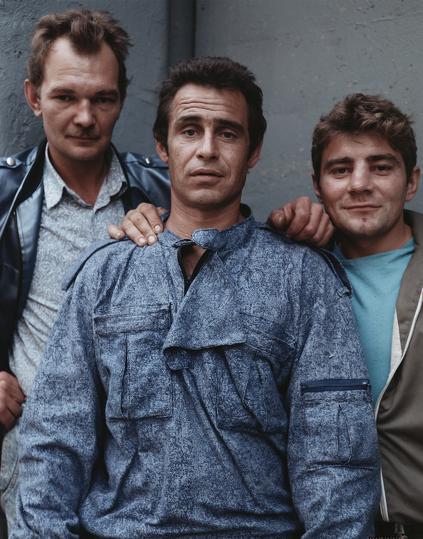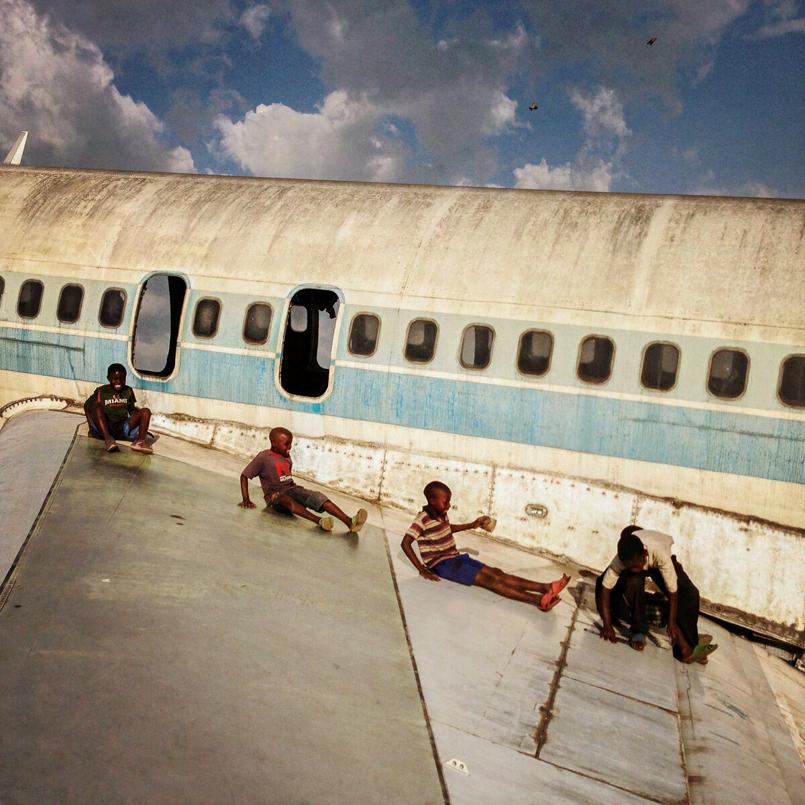
www.photographize.co/submissions
E-mail: sales@photographize.co
www.photographize.co

























www.vhils.com












www.photographize.co/submissions
E-mail: sales@photographize.co
www.photographize.co

























www.vhils.com











www.paoloverzone.com
Paolo Verzone, born in 1967 in Turin and currently dividing his time between Italy and Spain, emerges as a seasoned explorer of the human condition through the lens of his camera. A longstanding member of Agence VU since 2003, Verzone's photographic journey spans nearly three decades, delving into the intricacies of European identity, environmental concerns, and the interplay between individuals and their surroundings. Transitioning seamlessly from black and white to color photography, Verzone's work exudes a meticulous attention to light and composition, capturing the essence of his subjects with both rigor and eclecticism. His insatiable curiosity leads him to diverse locales, from the bustling streets of Moscow to the pristine expanses of the Arctic Circle, where he sheds light on pressing issues such as climate change.
Noteworthy accolades adorn his career, including three World Press Photo awards and recognition from Picture of The Year International. Verzone's photographs find homes in esteemed collections worldwide, including the Victoria & Albert Museum and the Bibliothèque Nationale de France, cementing his status as a prominent figure in contemporary photography. As a Canon Ambassador since 2017, Verzone continues to inspire with his insightful visual narratives, inviting viewers to contemplate the complex tapestry of human existence in an ever-changing world.
by Photographize
Born in Turin and currently living between Italy and Spain, how have these culturally rich environments shaped your perspective as a photographer?
Between Torino and Spain, I've lived for 18 years in France, which was a foundational period and city for me as a photographer. Paris has always been a vibrant capital of photography, alongside New York and London; my years in Paris have left me with many layers in all aspects of my cultural and personal development. I've read tons of books and seen hundreds of movies and exhibitions.
In Torino, I developed during my early years (I have been taking pictures since I was 14); when I lived there, Torino was a unique and ions.
eclectic city that left a lasting mark on me. In recent years, I moved to Barcelona for the incredible light and ambiance one can experience there. These three cities have completely reshaped me.
Over the three decades of working on the Moscow Project, how have you seen the city and its inhabitants evolve? What stories or changes most resonated with you?
The Moscow Project has been my first and longest (still ongoing) long-term project. It is a four-hands project done in collaboration with my friend photographer Alessandro Albert, we were taking the images as a team starting from the framing and the conception, it started in 1991,
the week after the August coup in what was then the USSR; the Soviet Union was in its last days of communism, and an entire society was shifting to a new era. I still recall the tension and magic of roaming the streets of Moscow with Alessandro in 1991, with the people curious about us as we were curious about them. lt was easy at that time to create an immediate bond with the Muscovites; we were part of two universes so distant that curiosity was the common ground and drive. I have many examples of the incredible people we met then. There was no internet, and speaking was the only way to communicate. Despite not speaking Russian, we always found a way to communicate.
In 1991, the change was palpable, and nobody knew what future was waiting for them. In the following chapter of 2001, society had gone through a drastic change, and everything was completely different from ten years before. I felt like only two extremes were left: the less healthy and the healthier/richer, as if the entire middle class had disappeared from the earth. It was a painful sensation to see an entire society pulled by two extremes.
By 2011, ten years later, the middle class was back and thriving; the extremes were still there but less palpable. The last chapter I did in 2021 gave me the impression of a society much similar to ours, with the digital era taking over all human communications.








Beaches often serve as places of leisure and escape. What inspired you to capture portraits of Europeans at the beach, and what did you hope to convey with this series?
This is another collaborative project with Alessandro Albert we got the idea for this series while on a British beach on holiday in 1993; we saw different people, but they all had the same mood and attitude. we guessed that the beach was determining their attitude, so we decided to investigate further using the 4x5 plate camera. The beach is a suspended place where we act differently. Taking images in different countries would give us more opportunities to observe humanity in this suspended environment, and we decided to also document our obsession for Europe through it, so it was an easy choice.
Your recent work on the Arctic touches upon scientific and environmental subjects. How do you balance the technicalities of these themes with the artistic aspect of photography?
It’s a balance I must manage in all my stories and assignments. I always want to have an unpredictable element of mystery in my images. I love imperfection to enter the most perfect image. I love imbalance, especially in pictures.
The Arctic, for that is extremely dangerous because it's too beautiful, and when I see too much beauty, a lot of bells ring in me. I have to be much more careful; photogenic is a dangerous beast, and I always try to stay far from it. So if I don’t see an imperfection, I chase it…
Working with top-tier magazines like National Geographic and Vanity Fair must have been a unique experience. Can you share a memorable story or learning from one of these collaborations?
I have many examples on many stories because I have the privilege to work with some of the best editors in the world, and the process is a constant learning, they have an amount of experience that is simply unbeatable.













www.29artsinprogress.com/artists/gian-paolo-barbieri














www.michaelchristopherbrown.com











www.29artsinprogress.com/artists/michel-haddi











www.rankin.co.uk










www.museumofwonder.com

























www.instagram.com/hideo.tanaka.art

Tanaka's artworks, characterized by their silent introspection, mysterious allure, and striking realism, invite viewers into contemplative realms where time stands still. His pride in pieces like "Spring" echoes the perseverance and dedication that define his artistic journey, reminding us of the transformative power of patience and persistence.
As Tanaka navigates the modern art landscape, he remains active on platforms like Facebook, leveraging social media to connect with a global audience and share his artistic vision. Through these digital avenues, Tanaka not only promotes his works but also fosters a community of art enthusiasts and fellow creators, enriching the discourse surrounding contemporary Asian art.
In a world often filled with noise and chaos, Hideo Tanaka's artworks serve as tranquil oases, beckoning viewers to immerse themselves in the beauty of silent contemplation and timeless mystery. His legacy as an artist and a beacon of creative resilience continues to inspire generations, proving that art transcends borders and speaks a universal language of introspection and wonder.











www.lukasiewiczmichal.bigcartel.com











www.elenigemeni.com























www.ondrejmedved.com





www.goeminneisabelle.com
www.instagram.com/isabelle.goeminne



www.nichtern-photo.com www.instagram.com/barbara_nichtern



www.instagram.com/hanyhossameldin
www.facebook.com/hanyhossam.photography


www.instagram.com/fenqiangliu


www.instagram.com/noisy.kid



www.careyschneider.com
www.instagram.com/carey__schneider



www.instagram.com/tagliaferri.art



